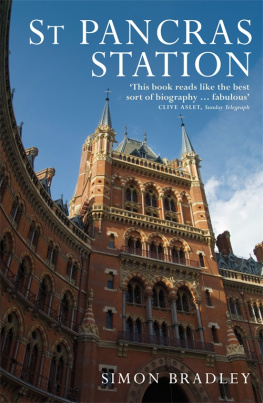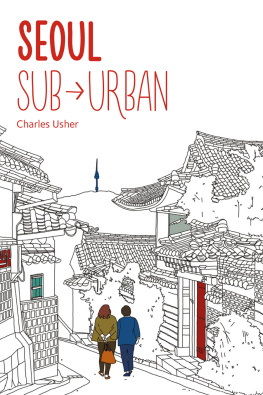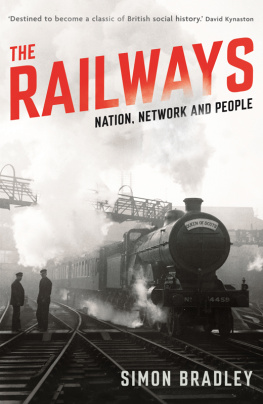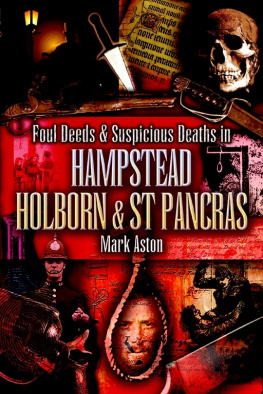Simon Bradley - St Pancras Station
Here you can read online Simon Bradley - St Pancras Station full text of the book (entire story) in english for free. Download pdf and epub, get meaning, cover and reviews about this ebook. year: 2008, publisher: Profile Books Ltd, genre: Religion. Description of the work, (preface) as well as reviews are available. Best literature library LitArk.com created for fans of good reading and offers a wide selection of genres:
Romance novel
Science fiction
Adventure
Detective
Science
History
Home and family
Prose
Art
Politics
Computer
Non-fiction
Religion
Business
Children
Humor
Choose a favorite category and find really read worthwhile books. Enjoy immersion in the world of imagination, feel the emotions of the characters or learn something new for yourself, make an fascinating discovery.
- Book:St Pancras Station
- Author:
- Publisher:Profile Books Ltd
- Genre:
- Year:2008
- Rating:3 / 5
- Favourites:Add to favourites
- Your mark:
- 60
- 1
- 2
- 3
- 4
- 5
St Pancras Station: summary, description and annotation
We offer to read an annotation, description, summary or preface (depends on what the author of the book "St Pancras Station" wrote himself). If you haven't found the necessary information about the book — write in the comments, we will try to find it.
Simon Bradley: author's other books
Who wrote St Pancras Station? Find out the surname, the name of the author of the book and a list of all author's works by series.
St Pancras Station — read online for free the complete book (whole text) full work
Below is the text of the book, divided by pages. System saving the place of the last page read, allows you to conveniently read the book "St Pancras Station" online for free, without having to search again every time where you left off. Put a bookmark, and you can go to the page where you finished reading at any time.
Font size:
Interval:
Bookmark:

Profiles Wonders of the World series is fast becoming something of a wonder itself, with its elegant design, its scholarly enthusiasm, and its respect for the general reader. Mark Bostridge, Independent on Sunday
Bradleys perceptive, entertaining and instructive book celebrates yet another imaginative leap forward Hilary Spurling, Observer
An eloquent, well-illustrated love letter to one of Londons most instantly recognisable landmarks London Review of Books
This is a brilliant book by the most talented English architectural topographer of his generation, and a worthwhile addition to Profiles series of monographs on individual monumental buildings. John Martin Robinson, Literary Review
Bradleys constant evocation of the culture of Victorian railway life is gripping and thorough. Ken Worpole, Independent
Bradley has worked miracles of condensation: there is nothing in this book that I am not happy to know; much more of it is valuable to know; all of it is a pleasure to know St Pancras is certainly a marvel, but even Bradleys wit, passion and charm cannot persuade me that Scotts Gothic wonderhouse ranks with the Parthenon, the Alhambra and the Taj Mahal. Yet so persuasive a guide is he that I am prepared to consider that the limitation might be mine, not the buildings. Judith Flanders, Spectator
A fascinating and detailed tale there is little more information one could ask of this wondrous place John McKean, Architects Journal
[Bradley] expounds upon his subject with dazzling breadth and care. Zo Strimpel, FT Magazine
St Pancras Station is written by an architectural historian; but an architectural historian with a feeling for machinery and an intuitive grasp of planning. It opens up a number of unhackneyed themes for a new and visually speaking newly literate readership. J. Mordaunt Crook, TLS
St Pancras Station is a beautifully written book Simon Bradleys erudition makes it not merely a pleasure to read, but also an excellent introduction to the nineteenth-century Gothic Revival and the great age of railways. Jeremy Musson, Country Life
The books importance lies in its clear exposition of the philosophy and stimulus which led to the building of one of our greatest Victorian monuments. Gordon Biddle, Railwayand Canal Historical Society Journal
Well-researched and eclectic a surprisingly engaging insight into a crucial period of this nations recent history. Paul Harrop, Bookbag
SIMON BRADLEY is the grandson and great-grandson of engine-men and grew up with a keen interest in railways and railway buildings. In 1994 he joined the staff of the Pevsner Architectural Guides, of which he is now editor. He is the author of two acclaimed volumes in that series, London1:The City of London and London6: Westminster. He lives in London.
WONDERS OF THE WORLD
ST PANCRAS STATION
SIMON BRADLEY
First published in Great Britain in 2007 by
Profile Books Ltd
3A Exmouth House
Pine Street
Exmouth Market
London EC1R 0JH
www.profilebooks.com
This eBook edition first published in 2010
Copyright Simon Bradley, 2007, 2010
The moral right of the author has been asserted.
Typeset in Caslon by MacGuru Ltd
This eBook is copyright material and must not be copied, reproduced,transferred, distributed, leased, licensed or publicly performed or used inany way except as specifically permitted in writing by the publishers, asallowed under the terms and conditions under which it was purchased or asstrictly permitted by applicable copyright law. Any unauthoriseddistribution or use of this text may be a direct infringement of the authorsand publishers rights and those responsible may be liable in law accordingly.
A CIP catalogue record for this book is available from the British Library.
eISBN: 978-1-84765-073-3
For Clara
CONTENTS
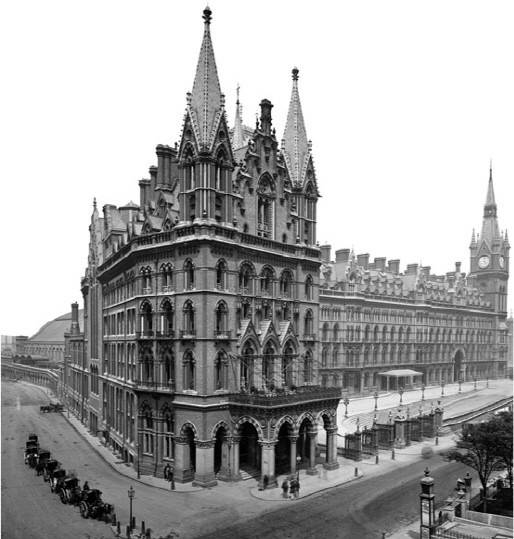
1. St Pancras Station, photographed by Bedford Lemere in the 1890s, before the advent of motor taxis. The Midland Grand Hotel and its approach ramp fill most of the frame. To the left, the train shed can be seen rising behind its screen wall. Kings Cross (not shown) stands just beyond, to the right.
Some saints are famous for themselves, others for having things named after them. St Pancras is in the second group: a celebrated railway station that takes its name from a large urban parish, whose ancient, over-restored mother church survives in a dingy corner of inner north London. Ask a taxi-driver for St Pancrass church, and he will probably drive you to its larger successor: a grand Grecian building of 1822 on the Euston Road, the busiest eastwest highway of the capital. A little further east, towering over the same highway, is the St Pancras of normal London usage, built in 186777 by the Midland Railway Company at the termination of its new trunk route to the capital.
The new station joined the roll-call of famous London termini Euston, Kings Cross, Paddington, Victoria, Waterloo all of which were likewise built for independent railway companies. A few of these rank among the earliest stations anywhere, opened barely a decade after railways in their mature form first appeared in the industrial north of England. The lines serving them forced their way into the city from every side. Concerned at the destructive effect on the centre of London, the government decreed limits in 1846 beyond which the railways were not allowed to go, and this explains why the companies serving the north and west stopped just north of the Euston Road. Only the underground Metropolitan Railway and its deeper successors (the Tube) have come south of this alignment. Even so, the railways impact on London was profound, as it was on the nations landscape, industry, patterns of work and leisure, and even on such apparently remote phenomena as advertising, book publishing and branded foodstuffs. Other countries and continents responded differently to the coming of the train, but few were altogether untouched; railways acted as a universal catalyst, accelerating travel, trade and urbanisation, and making possible the control and exploitation of natural resources and colonial empires.
The scale of the terminus at St Pancras suggests something of this wider significance. Its Euston Road frontage measures some 500 feet (150 metres) wide. From south to north, the maximum extent is nearly a thousand feet, a third of a kilometre. Yet the basic form of the Victorian station and what might be called its split personality are easily grasped. Its public face is the Midland Grand Hotel, a huge cliff of red brick dressed with stones of different colours: the grandest single monument of the Gothic Revival in Britain. It extends from a square-spired, 240-foot (72-metre) high clock tower at the east end to a lower and bulkier tower towards the west, from which point a curved projection sweeps forward up to the hotel portal. Under this second tower is a giant arch through which departing passengers entered the station proper; an additional arch further east disgorged the arrivals. Apart from the western salient, the hotel building is recessed behind a raised terrace, the front wall of which stands at a slight angle to the main range. The hotel also has a less elaborately treated side range on the west, which runs back aslant along the street called Midland Road. Behind, set end-on to the hotel and effectively concealed from the usual approaches to it, is the enormous iron and glass shelter over the plat-forms: a structure that in railway parlance is known a little bathetically as a train shed. This rises between screen walls that share the materials and architectural motifs of the hotel, but it is structurally as well as functionally separate from it. The designers were different too: the architect George Gilbert Scott for the hotel and the associated station rooms, the engineer William Henry Barlow for the train shed.
Font size:
Interval:
Bookmark:
Similar books «St Pancras Station»
Look at similar books to St Pancras Station. We have selected literature similar in name and meaning in the hope of providing readers with more options to find new, interesting, not yet read works.
Discussion, reviews of the book St Pancras Station and just readers' own opinions. Leave your comments, write what you think about the work, its meaning or the main characters. Specify what exactly you liked and what you didn't like, and why you think so.

